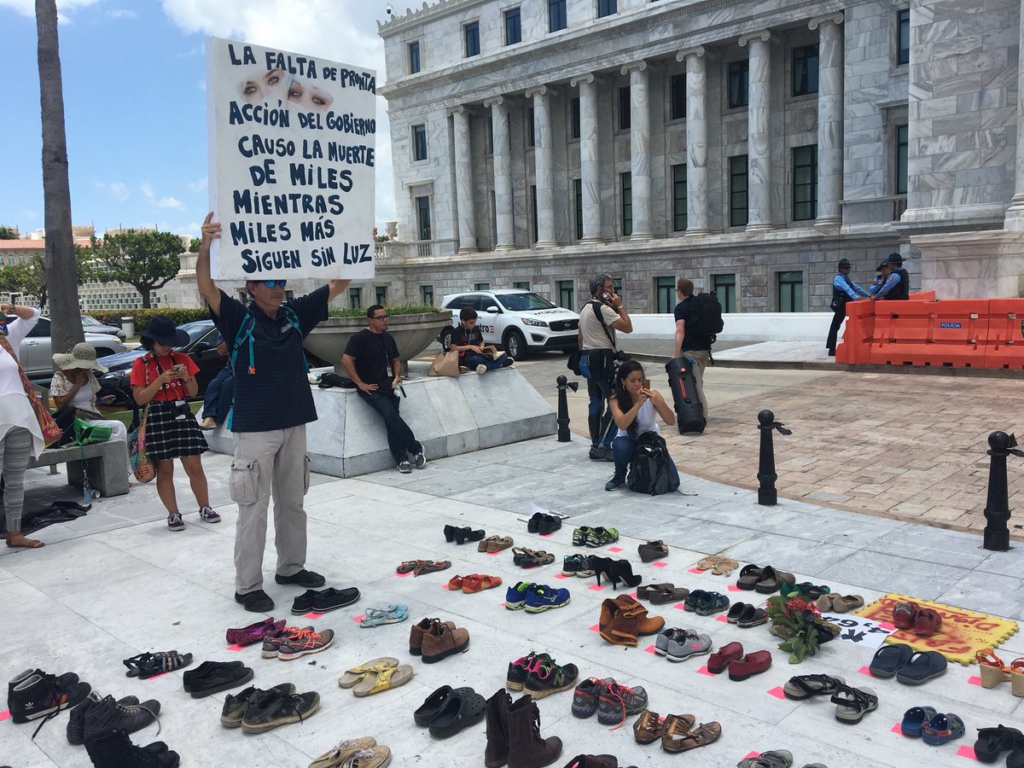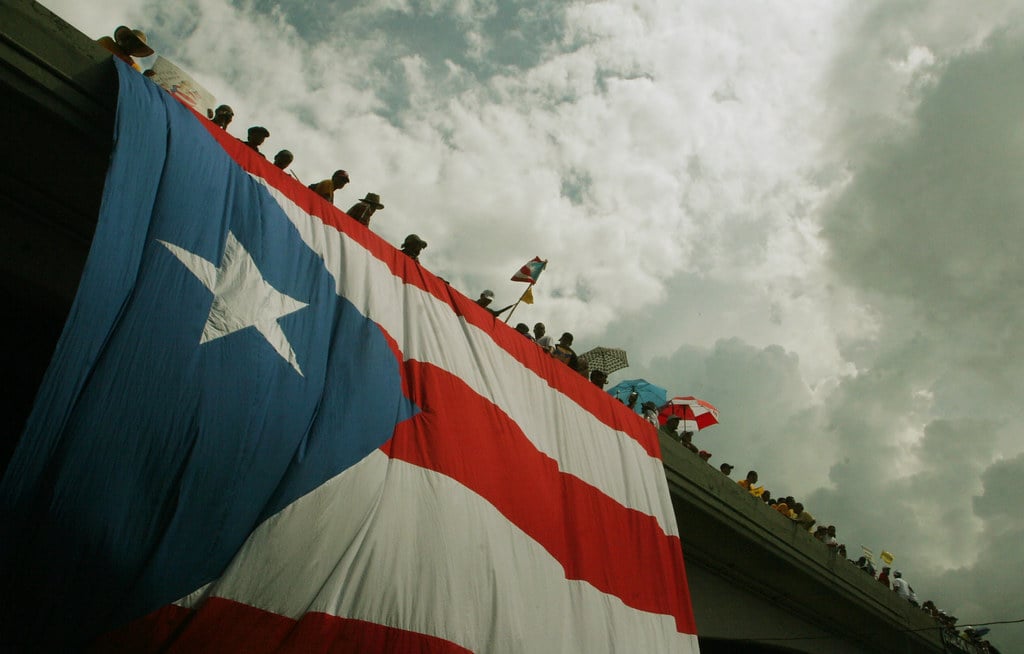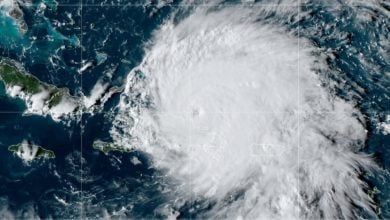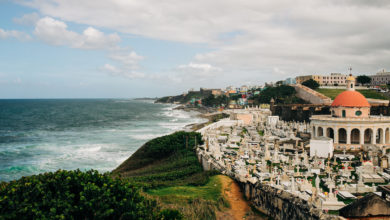
Hundreds of Puerto Ricans placed the shoes of their dead loved ones on the marble plaza of San Juan’s Capitol building on June 1, in remembrance of the thousands that died due to Hurricane Maria and its aftermath. This was the people’s response to a study released two days earlier revealing the death toll from the hurricane to be 70 times the government’s estimate.
The action was a moving tribute to the 4,654 who lost their lives. It was also an angry protest against the Puerto Rican government of Governor Ricardo Rosselló for denying the magnitude of the deaths, and against La Junta, Puerto Rico’s name for the Washington-appointed board of Wall Street bankers that has imposed harsh austerity on Puerto Rico, holding back the island’s recovery from Maria.
Remembering the cousin, the friend, the aunt who died
Luis Vasquez, who was at the memorial, remembered finding his father’s decomposing body two weeks after the hurricane hit. Vasquez had disposed of his father’s possessions, so he placed his own shoes on the steps. “We already threw all of his shoes away,” Vázquez said, standing barefoot on the hot marble. “So I put my own, and I’m going to leave them there,” he said in an interview with NPR.
In solidarity, Puerto Rican activists convened a Twitter protest using the hashtag #4645Boricuas and asked people on June 1 to individually name those that died. Throughout June 1 and continuing for days, people used the hashtag to remember that cousin that committed suicide several months after Maria hit; the friend who died alone because no one was able to reach her in time; the father who was found dead for reasons the family will never know.
Serious underestimation of death toll
The memorial and Twitter protest come after a Harvard Study published in the New England Journal of Medicine put the death toll of Hurricane Maria at an estimate of 4,645 deaths from the time the hurricane hit the island on September 20, 2017 to December 31, 2017. Researchers surveyed 3,299 random homes in Puerto Rico and each respondent was asked about death and the causes of death. The result was then compared to the mortality rate from the same period the year before.
The findings revealed a serious underestimation of the hurricane deaths by the government, with the new mortality estimate 70 times the official death toll of 64. In the Harvard study, a third of all deaths were attributed to delayed or interrupted access to proper medical care and the lack of basic utilities such as electricity. These conditions have continued way past December, and are still not resolved, indicating that storm-related deaths continue to this day.
In an interview with Rising Up with Sonali, Rosa Clemente, a mainland-based Puerto Rican activist who made a film exposing the extent of the crisis in Puerto Rico post Maria, recounted that in the months after the Hurricane, hospitals were so overwhelmed with patients and the lack of electricity that they had to prioritize patients who were dying, leaving others to their fate.
Clemente also stated that the lack of access to clean water–something not mentioned directly in the Harvard Study–also contributed to the death toll. “When you don’t have access to clean water, everything else falls apart,” she said.
Eyewitness accounts of Puerto Ricans who have gone from the mainland to do their own investigation of conditions reveal people still living in demolished homes without electricity, as well as contaminated water in many areas and resulting vermin infestations, which bring disease.
Trump, Rosselló have not accepted new figures
Since the Harvard study was published May 30, neither the Puerto Rican government nor the Trump administration has issued a response accepting the new estimates. In fact, Governor Rosselló tried to put the blame on others, exclaiming in a press conference that he would investigate if any agencies were concealing documents.
Back in December, when earlier studies and reports put the death toll at about 1,000, Rosselló refused to accept those estimates and said that the government would conduct its own independent study. Yet to this day the findings of such independent study were never made available to the public, and worse of all, there is no evidence to suggest such a study was even conducted by the government. Eight months after the disaster the official death toll remains 64.
FEMA helps cruise line, not Puerto Ricans
Back in October Trump boasted on Twitter that everything in Puerto Rico was “under control.” He said that FEMA, the federal disaster relief agency, and the military had done a “great job,’”and all buildings had been inspected for safety. It has recently come out that FEMA paid Carnival Cruise Line $75 million to house about 2,000 federal aid workers in a half empty ship for four months. This is more than it gave Puerto Rican families in direct aid to rebuild their homes during that time frame.
Thousands still without electricity
The Puerto Rican government announced plans to restore power to 95 percent of the island by December 2017, but that did not happen. In April, seven months after Maria hit, most of the island was still without power, and one power outage put the whole island back in the dark. As of June 1, 11,000 remain with no electricity at all, and the fragility of power grid means rolling outages in many places.
Hospitals are overcrowded and have had to deal with shortages of basic medicines and supplies such as oxygen. They cannot provide adequate health care without electricity. Many still do not have the power capacity to consistently run ventilators, sterilize equipment, refrigerate perishables or run operating theaters, among other things. It has been reported that people are dying in hospitals rather than recovering due to the power crisis.
Government’s response is more austerity
The response to this crisis has not been more aid, but more austerity. Rosselló, seen as a puppet of Washington, responded to the power crisis by revealing plans to privatize the Puerto Rican power company PREPA. This would line the pockets of Wall Street banks and corporations, but bring major hikes in utility prices to the people of Puerto Rico.
In fact, the privatization of PREPA is part of La Junta’s plan to defund and privatize what remains of Puerto Rico’s public assets. Proposed cuts target welfare recipients, public sector workers and retirees. Labor “reforms” would weaken worker power and increase unemployment. Moving to privatize education, over 300 schools have been closed, leaving students without schools and teachers without jobs. When teachers and other workers took to the streets to protest on May 1, they were met with brutality by police officers and private security cops under Rosselló ’s direction.
Governor Rosselló, La Junta, and Washington are to blame for the death of the 4,645 Puerto Ricans from September to December and for the thousands more that most surely have died in 2018 from Maria related-causes, and that will continue to die.
What will happen now? When Hurricane Maria hit in September, Puerto Rico did not have an emergency plan in place. Eight months later, with another hurricane season beginning, there is still no plan. Puerto Rico’s recovery from Maria still has a long way to go, and its infrastructure has been even further weakened by U.S. banks.





